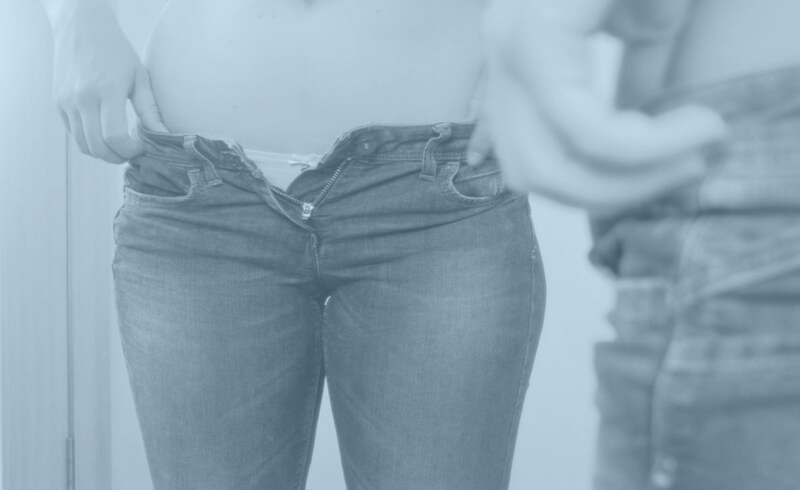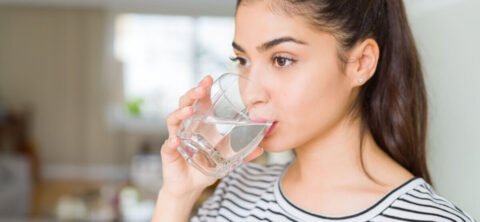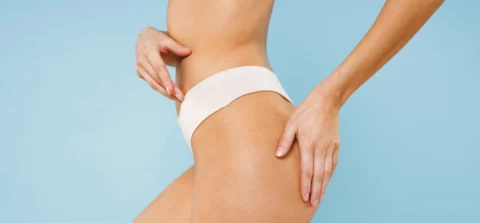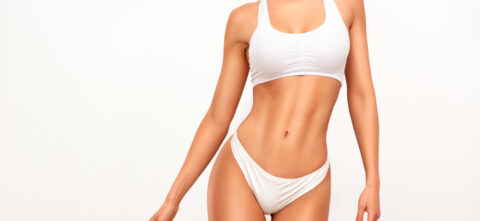One of the most popular fat reduction treatments on the market today is CoolSculpting, and for good reason: CoolSculpting can destroy roughly 25% of fat cells in the treated area. With fewer fat cells, stubborn fat deposits around a patient’s body can be treated and shrunk, forcing the body to eject the dead fat cells.
But what happens if you gain weight after CoolSculpting? While some patients think that you might end up looking lumpy, this isn’t the case. If a patient gains weight again after being treated with CoolSculpting, the fat will first settle in other areas of the body. The treated area will remain smooth and firm, as there are simply fewer fat cells present.
As there are fewer fat cells in the area that was treated with CoolSculpting, it can be more difficult for that area to look as fat as before. However, if a patient experiences extreme weight gain, fat cells from other areas can spread to the treated area, leading to a return to the previous body shape.
How CoolSculpting Works
To understand how the body reacts to weight gain after a CoolSculpting treatment, it is crucial to understand exactly how fat spreads in the body and how CoolSculpting works.
When a person first gains weight, fat cells begin to develop around the body. These fat cells can shrink and enlarge, with larger fat cells leading to a fatter body. People who have bigger bodies do not necessarily have more fat cells; rather, their fat cells are more enlarged than fat cells in thinner bodies.
Proper exercise and diet are some of the simplest and most ideal methods to lose weight, but losing weight isn’t always enough to eliminate the “fatty” look from certain parts of the body. For some people – no matter how much they watch their diet and exercise – certain areas remain problematic, with stubborn fat refusing to melt away.
These stubborn fat deposits are caused by having too many fat cells in an area; even when they are shrunk, their presence still creates a fatty appearance. Even the strictest exercise and diet plans can find it impossible to shrink stubborn areas of fat.
This is where CoolSculpting comes in. CoolSculpting is one of the most effective procedures to eliminate stubborn fat cells in a relatively fit body. This procedure uses the process of Cryolipolysis, in which the skin is pressed into a device that freezes the fat cells beneath the skin.
Once frozen, the fat cells die and become destroyed, allowing the body to register the dead fat deposits as waste. The body will then proceed to naturally remove the dead fat cells from the system, leading to a significant reduction of fat cells in the treated area.
CoolSculpting patients can expect up to 25% of the fat cells in the treated area to become frozen, destroyed, and removed due to the treatment.
With significantly fewer fat cells in the body’s traditional areas for storing stubborn fat deposits, the body is forced to find other areas to store fat; in most cases, the body will learn how to distribute the weight more evenly around the system.
CoolSculpting: Weight Loss and Fat Reduction
While diet and exercise teach us to focus on lowering the number on the weighing scale, it also gives us an incorrect understanding of the relationship between fat and weight. What many people do not understand is that the ultimate goal is to lose fat, not weight.
Weight is made up of every part of the body, including muscle; this means that if you grow muscle during your exercise and diet plan, you might end up becoming heavier than before, even if you have less fat (especially since muscle is denser and thus heavier than fat). This can leave even the most active people feeling hopeless, when they see their weight increase despite long days at the gym.
CoolSculpting concerns itself with helping patients reduce fat after they have lost weight. With the fat reducing process of CoolSculpting, patients can expect the following:
- The treated area to shrink in size by up to 40%
- A 25% reduction of fat cells in the treated area
- Clothing to fit better, and a more natural contour around the body
This is why CoolSculpting is mostly recommended to patients who are at or near their ideal body weight, as it should be a procedure used to perfect or top off your look, rather than help kickstart your weight loss journey.
But what happens if you gain weight back after your CoolSculpting procedure?
Gaining Weight After CoolSculpting
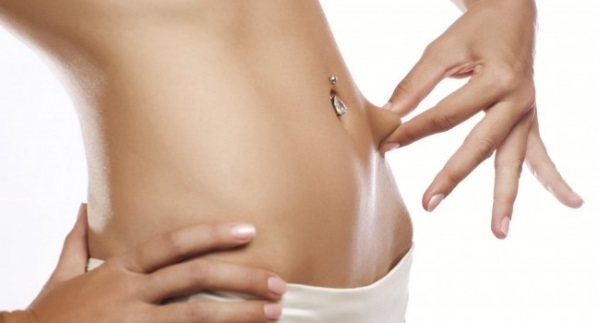
Some patients fear that gaining weight after CoolSculpting can be disastrous for the appearance of your body. The myth is that by having fewer fat cells in the areas of your body’s natural fat deposits, your body will have difficulty storing fat during extreme weight gain, leading to the body looking unnatural and lumpy in unusual areas, similar to tying a belt around certain parts of the body and forcing the fat into other areas.
Thankfully, the body works much more efficiently than most of us give it credit for. If you gain some weight, your body will distribute the weight to other areas; in most cases, this means your body will start distributing your fat more evenly rather than targeting certain fat deposit areas.
Secondly, the area treated with CoolSculpting will not return to being your body’s storage of stubborn fat. As there are significantly fewer fat cells, it is simply not possible; even if the fat cells become enlarged again, there aren’t enough fat cells for the area to look as fat or big as it once did.
However, it should be noted that if the body experiences prolonged extreme weight gain, then the fat cells might return to the treated area, with fat cells from adjacent areas spreading into the vacant spots caused by the treatment.
For example, if you have your lower stomach treated with CoolSculpting and gain weight after the procedure, then fat cells from your upper stomach or your hips might end up spreading back to your lower stomach (assuming the weight gain is extreme and prolonged).
Weight Gain Due to Pregnancy After CoolSculpting
Pregnancy-related weight gain, if controlled and not allowed to extend or grow long after the patient has given birth, won’t necessarily negate the results of CoolSculpting.
The body will naturally adjust to your former body shape as long as no extreme weight gain occurs for an extended time after the pregnancy. It is important to make sure that your weight doesn’t severely fluctuate as well, as this can encourage the spread of fat cells around the body.
Avoiding Weight Gain After CoolSculpting
The most important thing to remember is that CoolSculpting is not a procedure that guarantees permanent fat reduction results, and there are no permanent fat reduction procedures or treatments available. It is up to the patient to maintain their weight to retain the ideal results of their CoolSculpting treatment.
To keep your weight consistent after your CoolSculpting treatment, we recommend the following:
- A Lifestyle, not a Diet: Create and follow a healthy, balanced diet packed with the various nutrients your body requires to stay slim and fit. Fried foods, snacks, and heavily-processed foods should be kept at a minimum rather than allowed to become consistent parts of your meal plan. You should think of your healthy meal plan as a lifestyle, not a temporary diet.
- Consistency with Your Exercise: Maintain a moderate level of exercise, with at least three sessions of moderate to intense exercise per week, for at least 30 minutes each. This is the minimum cardiovascular requirements for an adult to maintain a healthy heart and overall cardiovascular system. Weight training should also be included in your exercise program to further define the CoolSculpting results with a toned body.
- Measure in More Ways Than One: Think about more than just your weight, as weight can be deceiving if measured by itself. Pay attention to the way your clothing fits, if certain sizes get tighter, and other ways to check your overall body fat. It can be easy to overeat after you start increasing your exercise intensity, as many people overestimate the amount of calories they burn during a workout.
Can You Have CoolSculpting a Second Time?
If you have experienced weight gain and then worked the weight off again, but feel that the results of your CoolSculpting treatment have disappeared, you may be wondering if it is advisable to have CoolSculpting done a second time.
The answer is of course – there should be no problem with having CoolSculpting done again if you would like to get your figure back on track.
Remember: CoolSculpting will only be effective if the targeted area has experienced an increase in the number of fat cells, due to spreading from other areas of the body caused by the excessive weight gain you experienced. It is still recommended to return near your ideal body weight before undergoing CoolSculpting a second time.
As CoolSculpting is a non-invasive procedure that only damages your fat cells, there should be no risk with having the procedure performed on the same area more than once.
Need to Know More About CoolSculpting?
If you are interested in learning more about CoolSculpting, or if you would like to book a free CoolSculpting consultation or appointment with some of the top providers of CoolSculpting in the New Jersey area, then contact us at Ethos Aesthetics + Wellness today.
Our team of medical professionals has performed successful and long-lasting CoolSculpting on countless happy patients. Why not see what CoolSculpting can do for you today?

